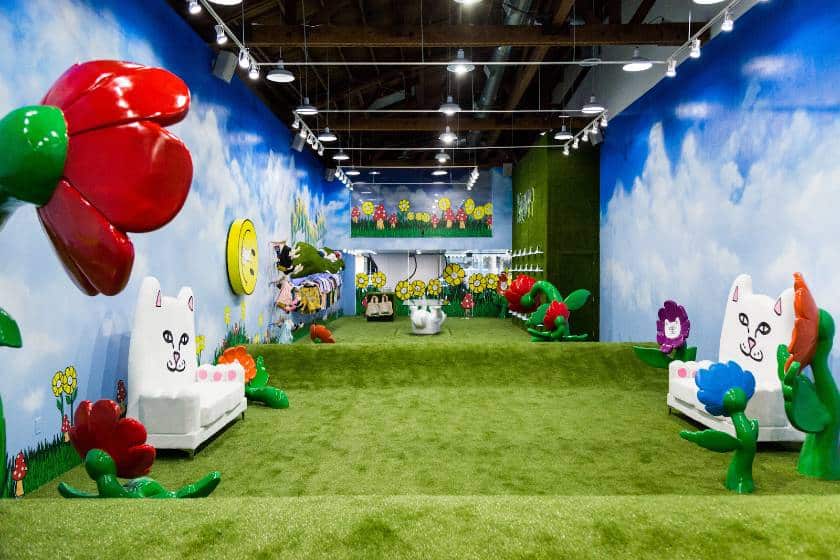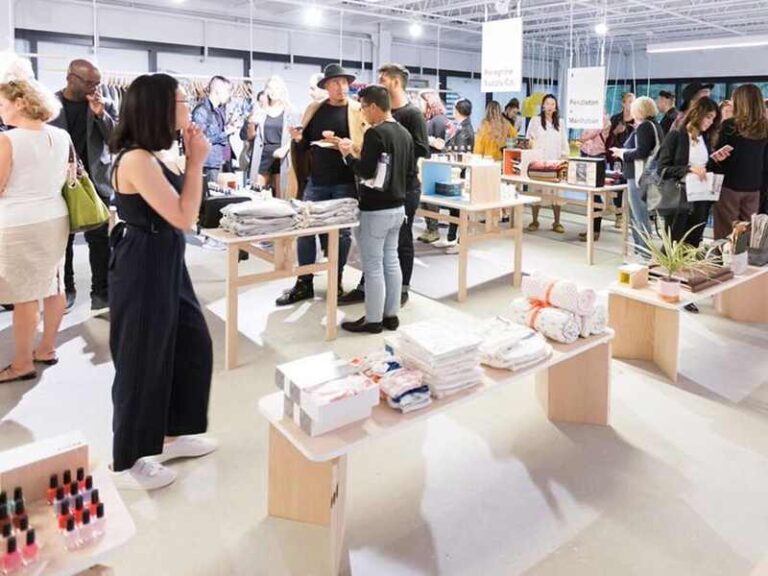Hosting a pop-up event can be a powerful way to showcase your brand, engage with your target audience, and generate buzz. However, successfully organizing and executing a pop-up event requires careful planning and attention to detail. In this comprehensive guide, we will explore how to host a pop-up event like a pro, step-by-step.
From selecting the perfect location to creating an immersive experience for your guests, we will cover everything you need to know to make your pop-up event a success. Whether you are a seasoned event organizer looking to try something new or a small business owner wanting to create a unique marketing opportunity, mastering the art of hosting a pop-up event is essential in today’s competitive market.
Understanding Pop Up Events
Pop-up events are temporary installations or experiences that provide a unique and engaging way for businesses to interact with customers. These events are becoming increasingly popular as they create a sense of urgency and exclusivity, driving customer interest and engagement.
Key Features of Pop Up Events
- Uniqueness: Pop up events offer a one-of-a-kind experience that traditional retail stores may lack.
- Limited Time: They are time-bound, creating a sense of urgency that encourages immediate action from customers.
- Location: Strategic placement in high-traffic areas can attract a larger audience.
Benefits of Hosting Pop Up Events
Hosting pop up events can significantly boost brand awareness and increase customer engagement. These events provide a platform for businesses to showcase new products, test markets, and interact directly with their target audience.
By offering a unique and immersive experience, pop up events create buzz and excitement around a brand, driving foot traffic and generating a sense of community among attendees.

Setting Objectives and Goals
As you embark on the journey of hosting a successful pop-up event, setting clear objectives and goals is crucial for guiding your planning and execution process. Define what you aim to achieve through the event, whether it’s increasing brand awareness, driving sales, or engaging with a new audience.
Establishing Clear Objectives
Begin by outlining specific and measurable objectives that align with your overall marketing strategy. These objectives should be SMART – Specific, Measurable, Achievable, Relevant, and Time-bound. For example, setting a target for the number of leads generated during the event can help track success.
Defining Achievable Goals
Create actionable goals that contribute to the overarching objectives. Whether it’s setting a goal for the foot traffic at the event or the percentage increase in social media followers post-event, these goals should be realistic and attainable within the event’s timeframe.
Choosing the Right Location
When planning a pop-up event, selecting the perfect location is crucial for its success. Consider factors such as foot traffic, accessibility, and the target audience’s demographics.
Foot Traffic Analysis
Choose a location with high foot traffic to maximize visibility and attract more attendees. Popular shopping areas, busy streets, or event spaces near public transportation hubs are ideal choices.
Accessibility and Convenience
Ensure that the location is easily accessible by public transport and has ample parking available. A convenient location will encourage more people to visit and participate in your pop-up event.
Creating a Budget
When learning how to host a pop up event, creating a budget is crucial for successful planning. Start by estimating all potential expenses including venue rental, permits, marketing, staffing, and supplies.
Research Costs
Gather quotes from various vendors and services to accurately estimate costs. Ensure to include a buffer for unexpected expenses and prioritize expenses based on importance.
Allocate Funds Wisely
Once you have the total budget, allocate funds to different aspects such as décor, promotions, and logistics. Plan for contingencies to avoid last-minute surprises.

Securing Permits and Licenses
When hosting a pop-up event, it is crucial to secure all necessary permits and licenses to comply with local regulations and avoid any potential legal issues. This process can vary depending on the location and the type of event you plan to host.
Research Local Requirements
Begin by researching the specific permits and licenses required in the city or area where you intend to host your pop-up event. Check with the local government offices or regulatory bodies to understand the necessary documentation.
Make sure to double-check the latest regulations as they can change frequently.
Apply in Advance
Start the application process for permits and licenses well in advance to allow for any potential delays or additional requirements. Some permits may take time to process, so it is essential to plan ahead.
- Event Permit
- Vendor License
- Health Permit
Designing the Event Space
When **hosting a pop-up event**, **designing the event space** is crucial for creating a memorable experience. Start by **choosing a venue** that aligns with your event theme and accommodates the expected number of guests. **Consider the layout** to ensure seamless flow and **incorporate eye-catching decor** to captivate attendees.
Selecting the Venue
**Select** a venue that resonates with the **theme of your pop-up event**. Ensure it has **sufficient space** to accommodate the anticipated number of guests. **Consider location** for visibility and accessibility.
Enhancing the Ambiance
**Create a welcoming atmosphere** with **appropriate lighting** and **music**. **Use decorations** that **emphasize the event’s theme** and **engage attendees**. Incorporate elements that **encourage social interaction**.
Marketing and Promotion
When it comes to how to host a pop up event, effective marketing and promotion strategies are crucial for success. Utilize social media platforms, email marketing, and collaborations with influencers to create buzz around your event.
Social Media Engagement
Utilize platforms like Facebook, Instagram, and Twitter to engage with your audience leading up to the event. Create eye-catching graphics and share exciting sneak peeks to generate interest.
Email Marketing Campaign
Design a compelling email marketing campaign to reach out to your subscribers and potential attendees. Include details about the event, exclusive offers, and call-to-action buttons to drive ticket sales.
Managing Logistics
When hosting a pop-up event, managing logistics is crucial to ensure its success. From setting up the venue to coordinating with vendors, here are some key aspects to consider:
Choosing the Right Venue
Start by scouting potential locations that align with your brand and target audience.
Verify the availability of utilities such as electricity and water.
Vendor Coordination
Secure reliable vendors for services like catering, furniture rental, and sound equipment.
- Communicate clearly with vendors regarding set-up and breakdown times.
- Ensure vendors have necessary permits for the event.
Engaging with Attendees
Engagement is key to the success of any pop-up event. By creating interactive experiences for attendees, you can leave a lasting impression and increase the likelihood of them returning or spreading the word about your event. Here are some strategies to enhance attendee engagement:
Interactive Booths
Set up interactive booths that encourage attendees to participate. For example, photo booths with props related to your event theme can be a fun way for attendees to engage and share their experiences on social media. Encourage attendees to use event hashtags for online visibility.
Live Demonstrations
Host live demonstrations or workshops to showcase products or services. This hands-on approach not only educates attendees but also creates a memorable experience. Offer exclusive discounts or giveaways for attendees who participate.
Interactive Games
Organize interactive games or contests to keep attendees entertained and engaged. This can include raffles, trivia challenges, or scavenger hunts related to your brand or products. Offer prizes that incentivize participation.
Frequently Asked Questions
-
- What is a pop-up event?
- A pop-up event is a temporary event that can be hosted in various locations such as storefronts, outdoor spaces, or even online, with the purpose of creating a unique and engaging experience for attendees.
-
- Why host a pop-up event?
- Pop-up events are a great way to generate buzz, create a sense of exclusivity, test new products or concepts, and connect with customers in a more intimate setting.
-
- What are some key steps in hosting a successful pop-up event?
- Some key steps in hosting a successful pop-up event include defining your goals, selecting the right location, creating a marketing plan, designing a compelling space, and providing a seamless customer experience.
-
- How can I promote my pop-up event effectively?
- Effective promotion strategies for a pop-up event include leveraging social media, collaborating with influencers or local businesses, sending out press releases, and using email marketing to reach out to your audience.
-
- What are some common challenges when hosting a pop-up event?
- Common challenges when hosting a pop-up event can include securing the right permits, dealing with limited time constraints, managing logistics, and ensuring sufficient foot traffic.
Mastering the Art of Hosting a Pop Up Event: Final Thoughts
Hosting a successful pop-up event requires careful planning, creativity, and attention to detail. By following the step-by-step guide provided in this blog, you can set yourself up for a memorable and engaging event that leaves a lasting impression on your attendees. Remember to focus on creating a unique experience, promoting your event effectively, and paying attention to logistics such as permits and insurance. Additionally, engaging with your audience before, during, and after the event is key to building relationships and fostering community support. With dedication and strategic thinking, you can master the art of hosting a pop-up event that truly stands out.



